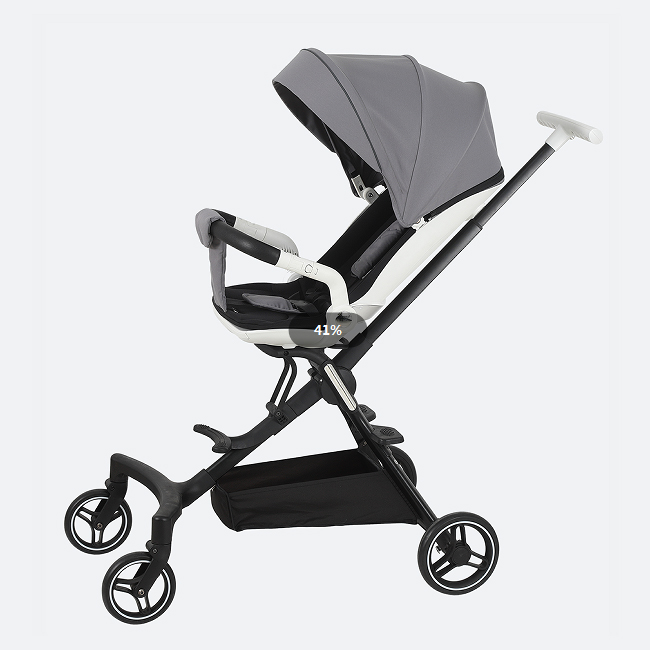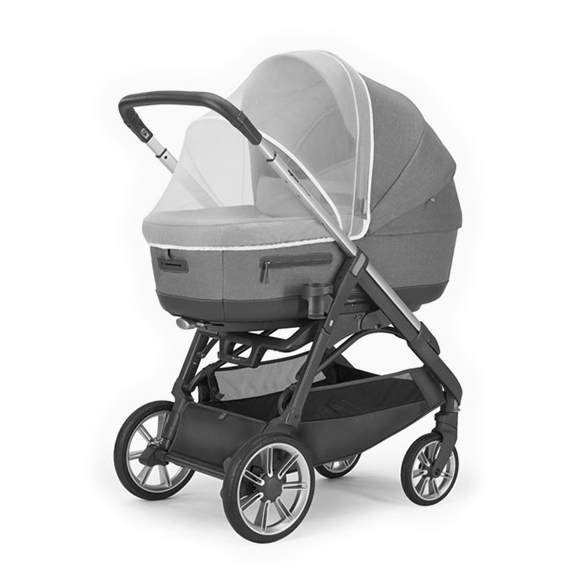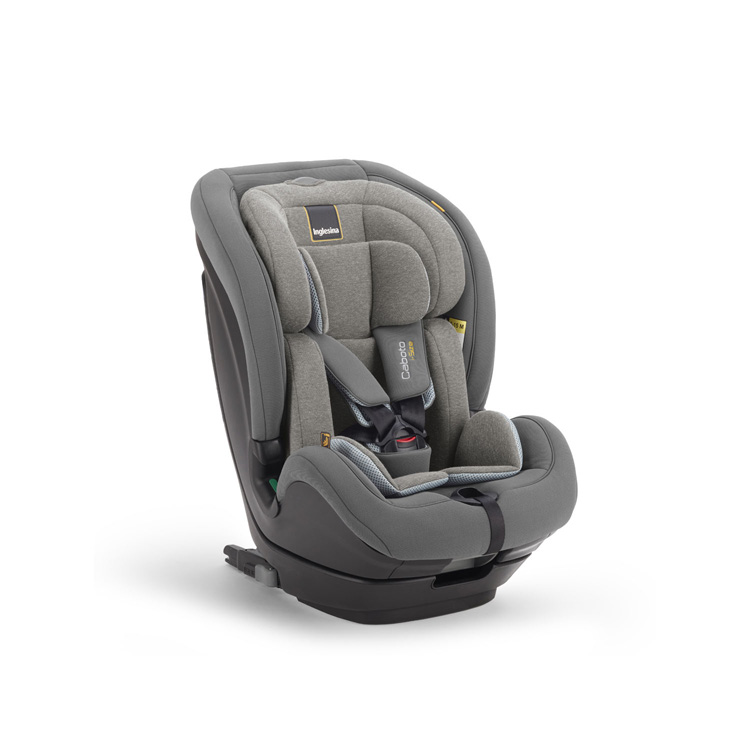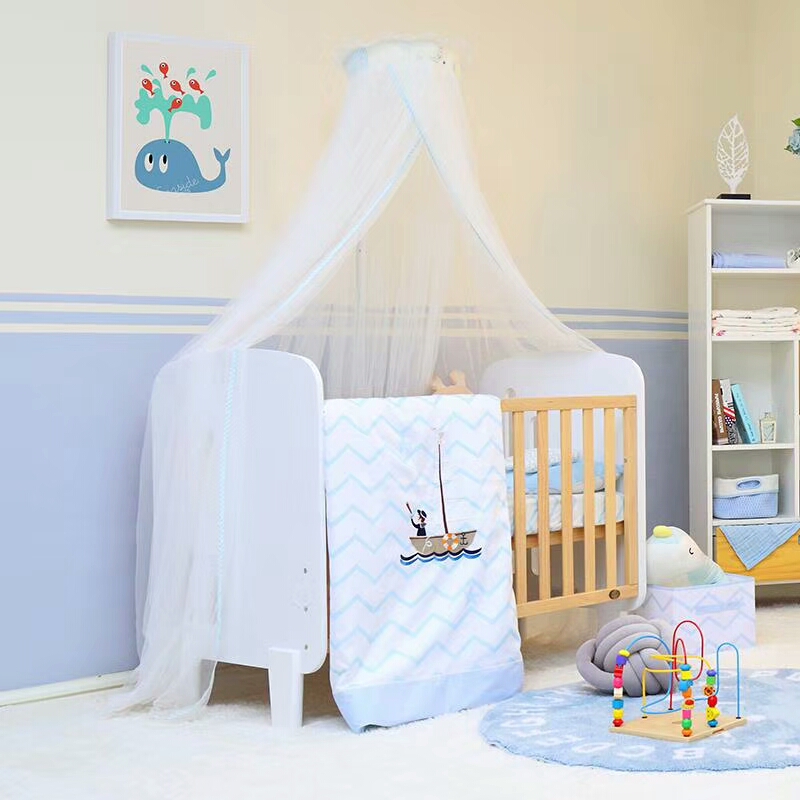How Often Should You Replace a Baby Pillow? Is Yellowing of Latex Pillows a Sign of Deterioration?
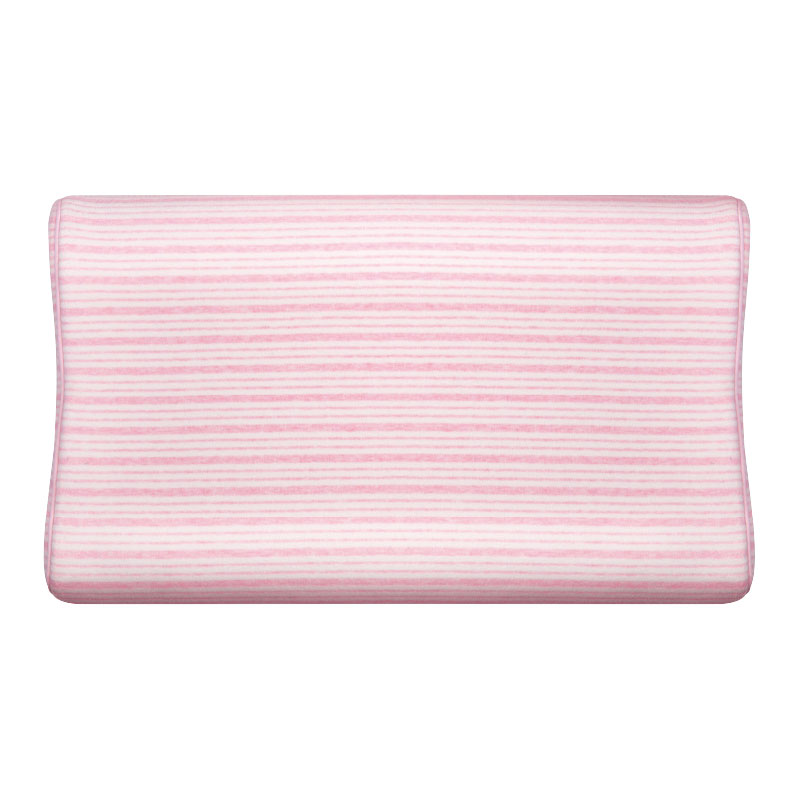
How Often Should You Replace a Baby Pillow? It Depends on Multiple Factors
The frequency of replacing a baby's pillow is not a one-size-fits-all answer. It varies depending on the baby's age, the type of pillow, and its condition. Understanding these factors is key to ensuring your baby's safety and comfort during sleep.
1. 0-3 Months: Pillows Are Generally Unnecessary
Newborns have a unique physiological structure. Their spines are straight, without the natural curves that develop as they grow. When a newborn lies flat, their head, neck, and back form a straight line. Using a pillow at this stage can disrupt this alignment, potentially causing the head to tilt forward and compress the airway. This increases the risk of suffocation, which is a serious concern for infants.
Instead of a pillow, a simple solution is to place a clean, breathable cotton towel under the baby's head. The towel should be thin enough to not elevate the head and should be changed whenever it becomes soiled with milk, saliva, or other fluids. This ensures a clean and safe sleeping surface without the risks associated with pillows.
It's important to note that some parents might be tempted to use special "newborn pillows" marketed to prevent flat head syndrome. However, the American Academy of Pediatrics (AAP) advises against using any pillows or positioners for infants under 1 year old, as they pose unnecessary safety risks. Tummy time when the baby is awake and supervised is a better way to help prevent flat spots on the head.
2. 3-6 Months: Introducing a Very Thin Pillow with Caution
Around 3 months of age, babies start to develop more control over their neck muscles and begin to lift their heads. This is a sign that the cervical spine is starting to form its natural curve. At this point, some babies may benefit from a very thin pillow, typically with a height of 1-2 cm.
The key here is to choose a pillow made from natural, breathable materials such as organic cotton or buckwheat hulls. These materials allow for proper air circulation, reducing the risk of overheating, which is another important factor in infant sleep safety.
When considering replacement at this stage, the primary factors are cleanliness and shape retention. Babies in this age group often spit up milk and drool, which can soak into the pillow. Even with a pillowcase, repeated exposure to moisture can lead to the growth of bacteria and mold. If the pillow becomes stained, emits an odor, or starts to lose its shape (e.g., the filling clumps together), it's time to replace it. This might happen as often as every 2-3 months in some cases, depending on how messy the baby is.
It's also essential to monitor the baby's sleep position when using a pillow. Ensure that the baby's head remains in a neutral position and that the pillow doesn't cover their face. If you notice any signs of discomfort or difficulty breathing, remove the pillow immediately.
3. 6-12 Months: Adjusting Pillow Height and Monitoring Condition
As babies reach 6 months, they become more active during sleep, rolling over and moving around. The cervical curve continues to develop, and a slightly thicker pillow (2-3 cm) may be appropriate. However, every baby is different, and some may still prefer sleeping without a pillow. It's important to observe your baby's comfort level.
At this stage, the pillow's durability and support become more important. Materials like memory foam (if used) should retain their shape and not form indentations that could restrict movement. Natural latex pillows, which are known for their elasticity, can be a good option here, but they require careful maintenance.
Replacement intervals can extend to 4-6 months, but this depends on several factors:
Shape and Support: If the pillow has flattened significantly or no longer springs back when pressed, it's no longer providing adequate support and should be replaced.
Hygiene: Even with regular pillowcase changes, the pillow core can absorb odors and moisture over time. If cleaning the pillowcase doesn't eliminate the smell, or if there are visible stains that can't be removed, replace the pillow.
Allergies: If your baby develops skin rashes or respiratory issues that you suspect might be related to the pillow, it's a good idea to replace it with a hypoallergenic alternative.
4. 1-2 Years: Choosing a Pillow with Better Support
By the time a baby turns 1, their motor skills have developed further, and they are often able to sit, stand, and walk. The cervical spine's curve is more pronounced, and a pillow with a height of 3-4 cm is usually suitable.
Pillows for toddlers in this age range should offer better support while still being soft and comfortable. Materials like latex (both natural and synthetic) and high-quality cotton are popular choices. The replacement frequency here is typically 6-12 months, but again, this depends on the pillow's condition.
One thing to note is that toddlers may start to have preferences for their pillows. If your child seems to avoid the pillow or fusses during bedtime, it might be a sign that the pillow is uncomfortable, either due to its height, texture, or smell. In such cases, trying a different pillow might be necessary, even if the current one is still in good condition.
5. 2+ Years: Establishing a Regular Replacement Schedule
After the age of 2, children's sleep patterns become more similar to adults, and they can use pillows with a height of 4-6 cm, depending on their size and comfort. At this stage, the replacement schedule can be more regular, typically every 1-2 years, depending on the material and usage.
However, it's still important to inspect the pillow regularly. Signs that it's time for a replacement include:
Persistent odors despite cleaning
Visible wear and tear (e.g., holes in the fabric, filling coming out)
Loss of support (the pillow doesn't recover its shape)
Allergic reactions or skin irritations that are linked to the pillow
Understanding Latex Pillow Yellowing: Normal Aging or Deterioration?
Latex pillows have gained popularity in recent years due to their natural elasticity, breathability, and resistance to dust mites. However, one common concern among parents is the yellowing that occurs over time. Let's explore this phenomenon in detail.
1. The Science Behind Latex Yellowing
Natural latex is derived from the sap of the rubber tree (Hevea brasiliensis). It contains a variety of organic compounds, including proteins, lipids, and carbohydrates. These compounds are susceptible to oxidation when exposed to air, light, and heat.
Oxidation is a chemical reaction that occurs when the molecules in the latex react with oxygen in the air. This process breaks down some of the organic compounds, leading to a change in color from the original milky white to a light yellow or amber hue. This is a natural and inevitable process, similar to how apples turn brown when cut open or how leather ages over time.
The rate of yellowing can be influenced by several factors:
Light Exposure: Ultraviolet (UV) rays from sunlight accelerate the oxidation process. Pillows placed near windows or in well-lit rooms may yellow more quickly.
Heat and Humidity: High temperatures and humidity can speed up chemical reactions, including oxidation. This is why latex pillows stored in damp basements or attics may yellow faster.
Body Fluids: Sweat, saliva, and oils from the skin can come into contact with the latex, especially if the pillowcase is not changed regularly. These fluids contain enzymes and other substances that can contribute to the breakdown of the latex's organic components, leading to faster yellowing.
2. Differentiating Normal Yellowing from Deterioration
It's crucial to distinguish between normal yellowing, which is a cosmetic change, and signs of actual deterioration, which indicate that the pillow is no longer safe or effective.
Signs of Normal Yellowing:
The yellowing is uniform across the surface of the pillow, without dark spots or streaks.
The pillow retains its softness and elasticity. When pressed, it should spring back to its original shape.
There is no unpleasant odor. Natural latex has a mild, rubbery scent that fades over time. A lack of strong or foul smells is a good indicator.
The surface of the pillow is smooth, with no cracks, flakes, or hardening.
Signs of Deterioration:
Uneven Yellowing with Dark Spots: This could be a sign of mold or mildew growth, which is often caused by excessive moisture. Mold can produce allergens and toxins that are harmful, especially to young children.
Hardening or Brittleness: If the latex feels stiff, rigid, or crumbly, it has likely degraded beyond repair. This loss of elasticity means the pillow no longer provides adequate support.
Foul Odors: A strong, sour, or rotten smell indicates bacterial growth or chemical breakdown of the latex. This can be harmful if inhaled or if it comes into contact with the baby's skin.
Cracks or Tears: Physical damage to the latex structure compromises its integrity and can lead to the release of small particles, which the baby could inhale.
3. Extending the Lifespan of a Latex Pillow
With proper care, a natural latex pillow can last 2-3 years, which is longer than many other types of pillows. Here are some tips to maximize its lifespan:
Protect from Sunlight: Store the pillow in a cool, dark place when not in use, and avoid placing it in direct sunlight. If drying the pillow after cleaning, do so in a shaded area.
Use a Removable, Washable Pillowcase: A high-quality, breathable pillowcase acts as a barrier, protecting the latex from direct contact with sweat, saliva, and oils. Wash the pillowcase at least once a week in warm water with a mild, fragrance-free detergent.
Avoid Overwashing the Pillow Core: Natural latex is porous and can absorb water, which can lead to mold growth and breakdown. Spot clean the latex core only when necessary, using a damp cloth with a small amount of mild soap. Gently blot the area and allow it to air dry completely in a well-ventilated space before using it again.
Maintain a Dry Environment: Ensure the baby's bedroom is well-ventilated to reduce humidity. Using a dehumidifier in damp climates can help prevent moisture buildup in the pillow.
Rotate and Fluff Regularly: Rotating the pillow 180 degrees every few weeks ensures even wear. Fluffing it gently can help maintain its shape and elasticity.
Avoid Harsh Chemicals: Do not use bleach, fabric softeners, or strong cleaning agents on the latex core, as they can break down the material.
4. When to Replace a Latex Pillow
Even with the best care, all latex pillows will eventually reach the end of their useful life. Here are some guidelines for when to replace them:
After 2-3 Years: As a general rule, natural latex pillows start to lose their support and elasticity after 2-3 years of regular use. Even if they don't show obvious signs of deterioration, their ability to provide proper neck support diminishes over time.
At the First Sign of Deterioration: If you notice any of the signs of deterioration mentioned earlier, such as mold, hardening, or foul odors, replace the pillow immediately. The health and safety of your baby are paramount, and a compromised pillow is not worth the risk.
When the Baby Outgrows It: As the baby grows, their pillow needs change. A latex pillow that was perfect for a 1-year-old may be too thin or too soft for a 3-year-old. When adjusting the pillow height, it's often more practical to replace the pillow rather than trying to add additional filling, which can affect the pillow's integrity.
Comparing Different Pillow Materials for Babies
While latex is a popular choice, there are several other pillow materials available, each with its own advantages and disadvantages. Understanding these can help you make the best choice for your baby, and also provides context for replacement schedules, as different materials have different lifespans.
1. Cotton Pillows
Cotton is a natural, breathable material that is soft and gentle on a baby's skin. It's also hypoallergenic, making it a good option for babies with sensitive skin or allergies.
Advantages:
Highly breathable, reducing the risk of overheating.
Easy to clean; many cotton pillows come with removable, machine-washable covers, and some cotton fillings can be washed as well.
Affordable compared to other materials.
Disadvantages:
Cotton fillings can clump together over time, losing their shape and support.
They may absorb moisture more readily, which can lead to bacterial growth if not dried properly.
Replacement Schedule: Cotton pillows typically need to be replaced every 6-12 months, depending on usage and care. If the filling becomes lumpy or the pillow loses its shape, it's time for a new one.
2. Buckwheat Hull Pillows
Buckwheat hulls are the outer shells of buckwheat grains. They are firm yet malleable, conforming to the shape of the baby's head while providing support.
Advantages:
Excellent breathability, as the hulls allow air to circulate freely.
The firmness can help maintain proper neck alignment.
They are naturally resistant to dust mites and mold.
Disadvantages:
They can be noisy when the baby moves, as the hulls rub against each other.
The hulls can break down over time, leading to a loss of support.
They are heavier than other pillow fillings.
Replacement Schedule: Buckwheat hull pillows can last 1-2 years, but the hulls may need to be refilled periodically. If the pillow becomes too flat or the hulls feel crushed, replace or refill it.
3. Memory Foam Pillows
Memory foam is a synthetic material that responds to heat and pressure, contouring to the body. It's known for its ability to provide personalized support.
Advantages:
Offers excellent support, conforming to the baby's head and neck.
Retains its shape well over time.
Disadvantages:
Can trap heat, increasing the risk of overheating.
Some memory foams emit volatile organic compounds (VOCs) when new, which can have a strong odor and may be harmful. Look for low-VOC or CertiPUR-US certified memory foam.
Not as breathable as natural materials.
Replacement Schedule: Memory foam pillows can last 1-2 years, but if they start to lose their responsiveness (i.e., they don't spring back quickly) or develop indentations that don't disappear, they should be replaced.
4. Feather and Down Pillows
Feather and down pillows are soft and lightweight, providing a plush sleeping surface. However, they are not always the best choice for babies.
Advantages:
Very soft and comfortable.
Good insulation, but this can be a disadvantage in warm climates.
Disadvantages:
Feathers can poke through the pillowcase, irritating the baby's skin.
They are a common allergen, triggering allergies in some babies.
They require careful cleaning to maintain their loft and prevent clumping.
Replacement Schedule: Feather and down pillows can last 2-3 years with proper care, but they need to be fluffed regularly. If they become flat or lose their softness, it's time to replace them. Due to the allergy risk, many pediatricians recommend avoiding feather and down pillows for babies under 2 years old.
General Tips for Choosing and Maintaining Baby Pillows
Beyond understanding replacement schedules and material characteristics, there are several general guidelines to keep in mind when it comes to baby pillows:
1. Prioritize Safety
Always choose pillows that are specifically designed for babies, with appropriate dimensions and firmness. Avoid using adult pillows, as they are too large and soft, increasing the risk of suffocation.
Look for pillows that meet safety standards, such as those certified by the Juvenile Products Manufacturers Association (JPMA).
Avoid pillows with small decorative elements, such as buttons or beads, which can come loose and pose a choking hazard.
2. Consider the Baby's Individual Needs
Every baby is unique, and what works for one may not work for another. Pay attention to your baby's sleep habits and comfort levels. If your baby seems restless or uncomfortable with a pillow, try a different type or go without one.
If your baby has specific health conditions, such as reflux or sleep apnea, consult with a pediatrician before using a pillow. They may recommend a special pillow or sleeping position.
3. Establish a Cleaning Routine
Wash pillowcases at least once a week, using a mild, fragrance-free detergent. This helps remove sweat, saliva, and other fluids that can accumulate.
Follow the manufacturer's instructions for cleaning the pillow core. Some materials can be machine-washed, while others require spot cleaning or air drying.
Air out the pillow regularly by placing it in a well-ventilated area. This helps prevent moisture buildup and keeps the pillow fresh.
4. Monitor for Changes
Regularly inspect the pillow for signs of wear and tear, such as stains, odors, or changes in shape. Catching these issues early can help you replace the pillow before it becomes a problem.
As your baby grows, reassess the pillow's height and support. What was appropriate for a 6-month-old may not be suitable for a 1-year-old.
Conclusion
Choosing the right pillow for your baby and knowing when to replace it are essential aspects of ensuring their safe and comfortable sleep. The frequency of replacement depends on the baby's age, the pillow's material, and its condition. Latex pillows, with their natural elasticity and breathability, are a popular choice, but their yellowing is usually a normal sign of aging rather than deterioration. By understanding the differences between normal aging and actual damage, and by following proper care and maintenance practices, you can extend the life of your baby's pillow.
Ultimately, the goal is to provide a sleeping environment that supports your baby's growth and development. By staying informed and attentive to your baby's needs, you can make the best decisions when it comes to their pillows and help them get the restful sleep they need.



